Under the restored iron-and-glass canopy of Paris’s Grand Palais, Brazilian artist Ernesto Neto has unfurled Nosso Barco Tambor Terra, a monumental, handwoven installation that merges material craft with spiritual architecture. This work occupies the space and reshapes how visitors move, breathe, and connect within it.
Suspended from the ceiling of the Grand Palais’ North Nave, the structure appears as a cascading canopy of crochet, bark, fiber, earth, and spice. Its form is simultaneously organic and ordered like a living membrane, echoing the undulating rhythms of a natural landscape. Neto’s technique, rooted in traditional Brazilian weaving and shaped by months of manual labor, produces a tactile softness that stands in contrast to the rigid geometry of its architectural host.
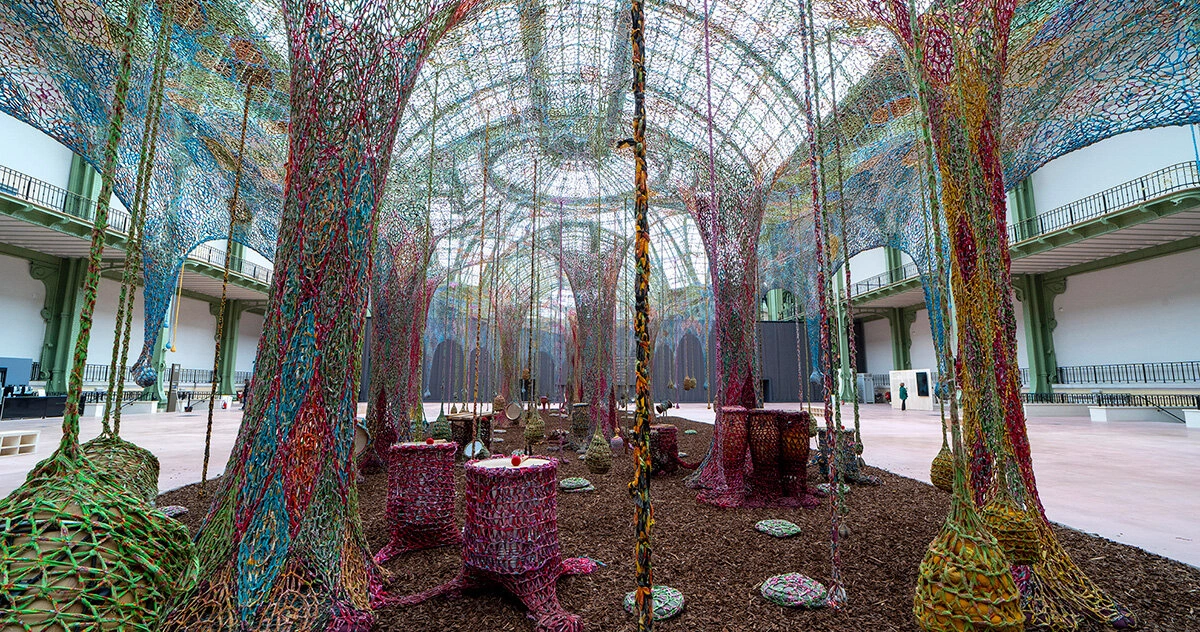
At a sensory level, the installation is deeply immersive. Turmeric, cinnamon, black pepper, and other spices are stitched into the fabric, releasing scents that envelop visitors as they walk barefoot across patches of woven soil and suspended fiber. The tactile ground asks for slowness. The air is dense with smell, while subtle acoustic vibrations emerge from drums concealed within the structure. These instruments, originating from across the globe, are activated during live performances, where musicians engage the work as both a sculpture and an instrument.
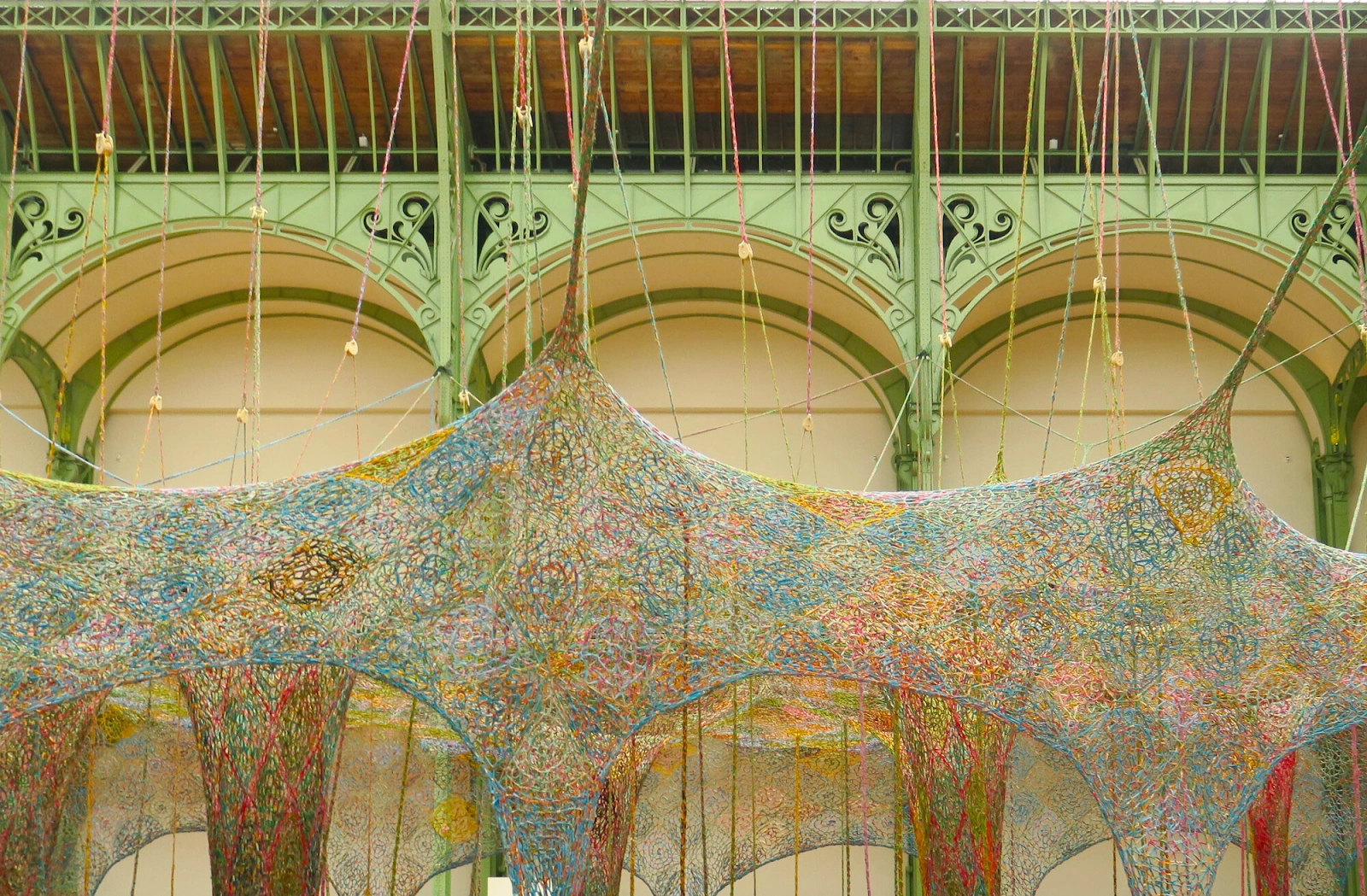
Neto’s conceptual threads are equally rich. The piece takes its name from the Portuguese words for “boat,” “drum,” and “earth,” a triad symbolizing journey, rhythm, and rootedness. The “boat” evokes transatlantic crossings, both painful and transformational. The “drum” ties into ancestral sound practices, calling on global musical traditions. “Earth” grounds the piece, reminding us of the soil as both origin and destination.
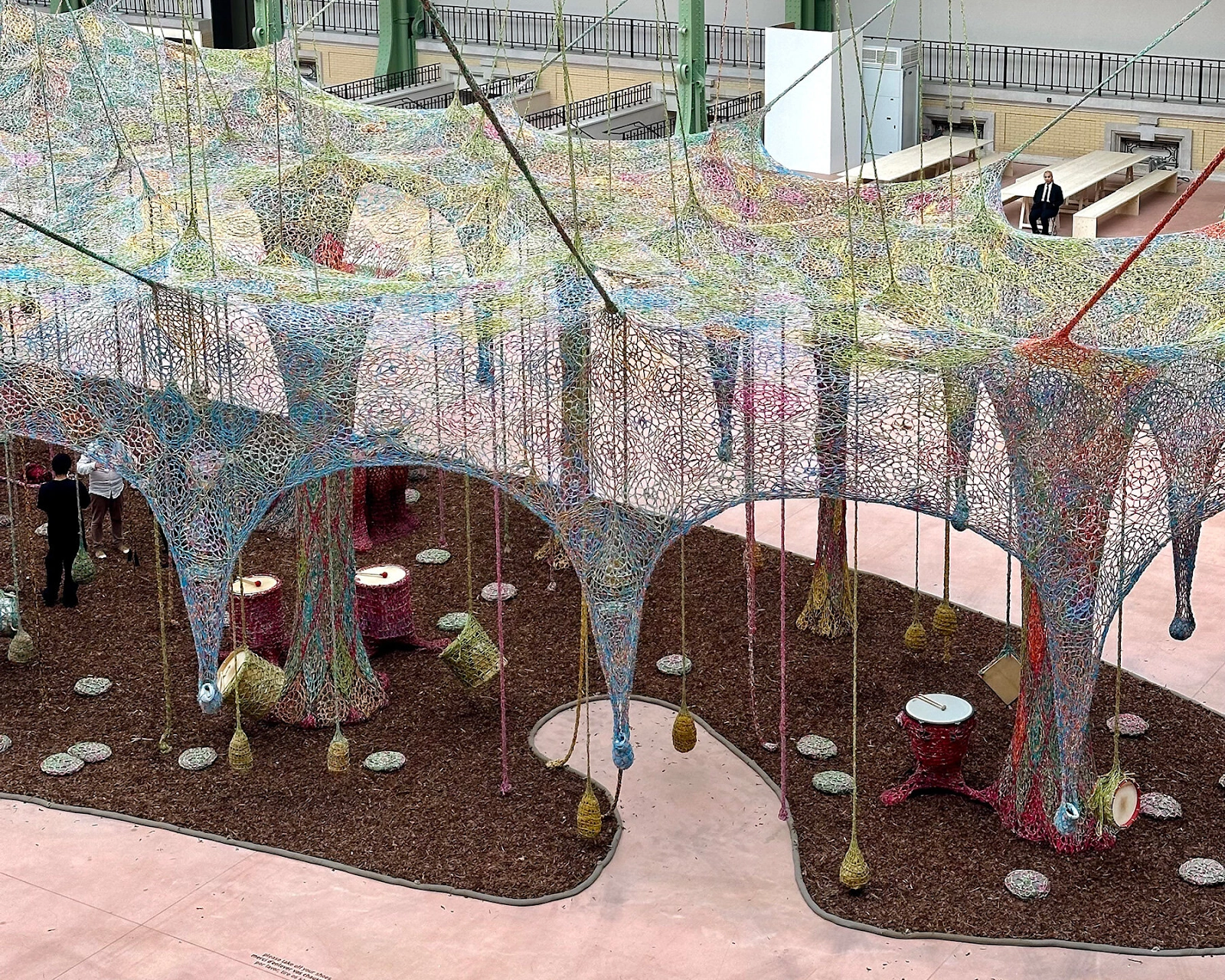
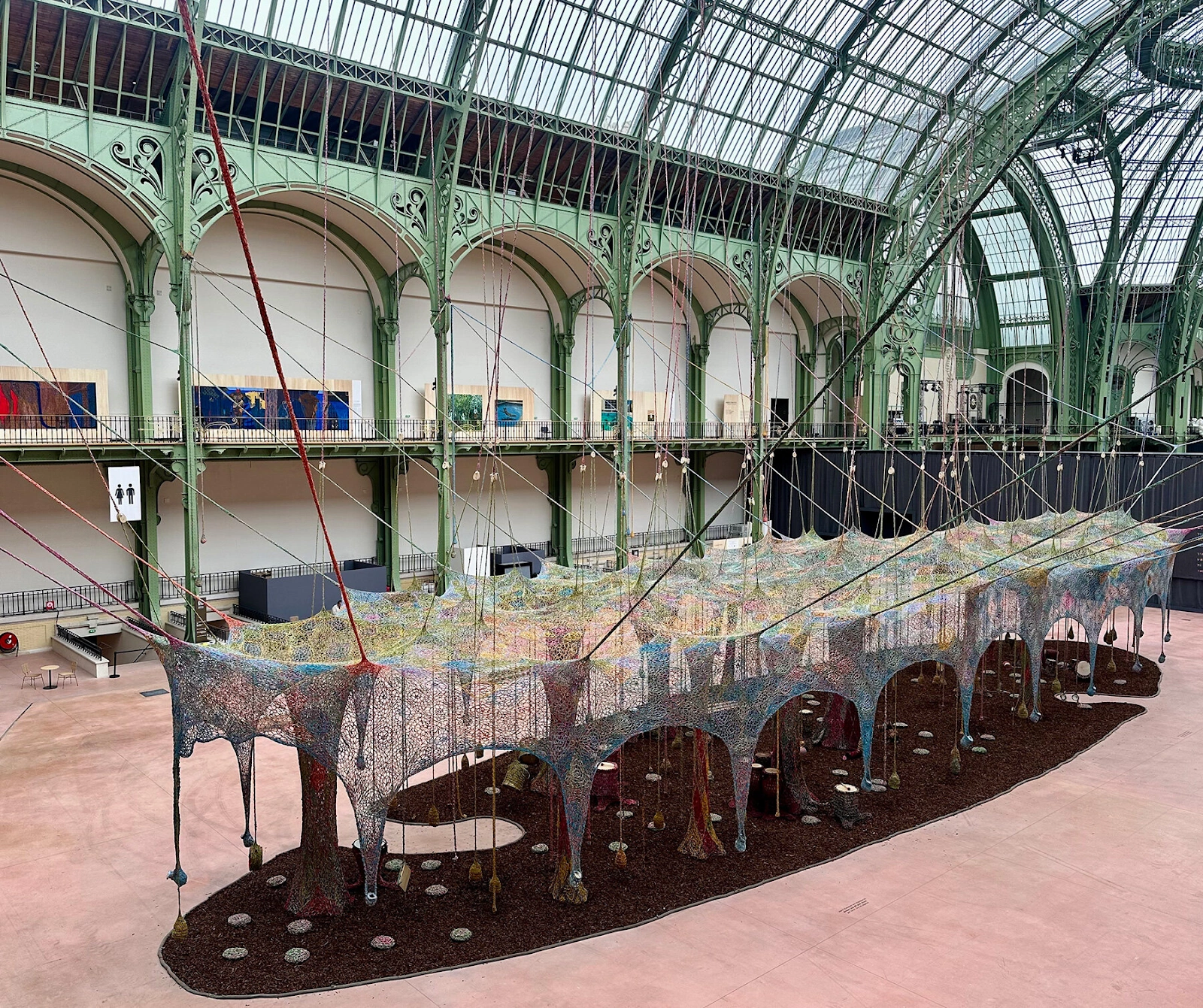
Importantly, Nosso Barco Tambor Terra is part of a broader cultural initiative, France Brazil Season 2025, co-produced with Lisbon’s MAAT. Around the installation, the Grand Palais hosts public programs: workshops, live music, and discussions that activate the space as a communal platform for reflection and exchange. A Brazilian café tucked nearby extends this gathering spirit.
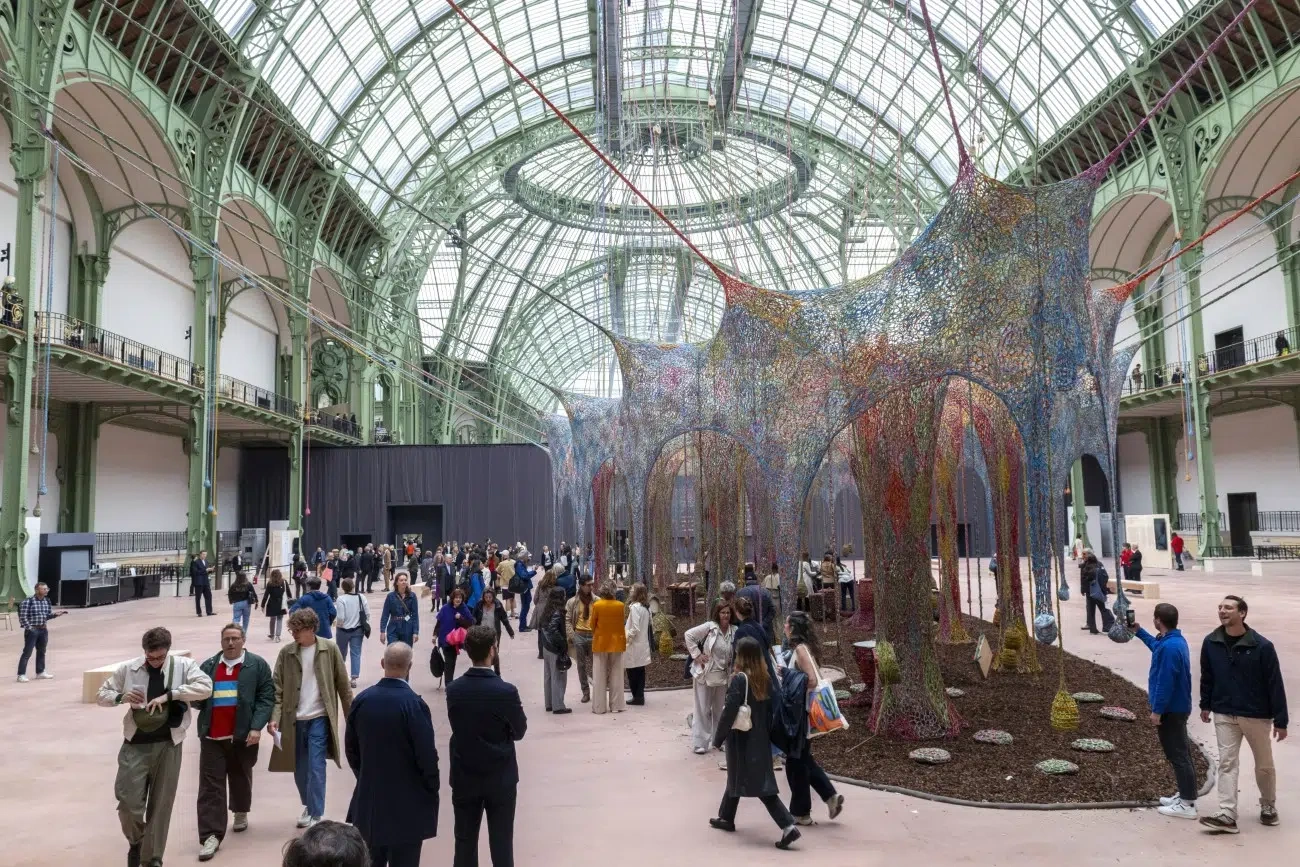
Grand Palais
This installation also marks a symbolic reawakening for the Grand Palais itself. Following years of architectural restoration led by Chatillon Architectes, the space is now reopened to the public ahead of the Paris 2024 Olympics. Neto’s organic installation is a poetic counterpoint to the sleek renovations. It is raw, slow, and manual in a moment defined by speed and spectacle.
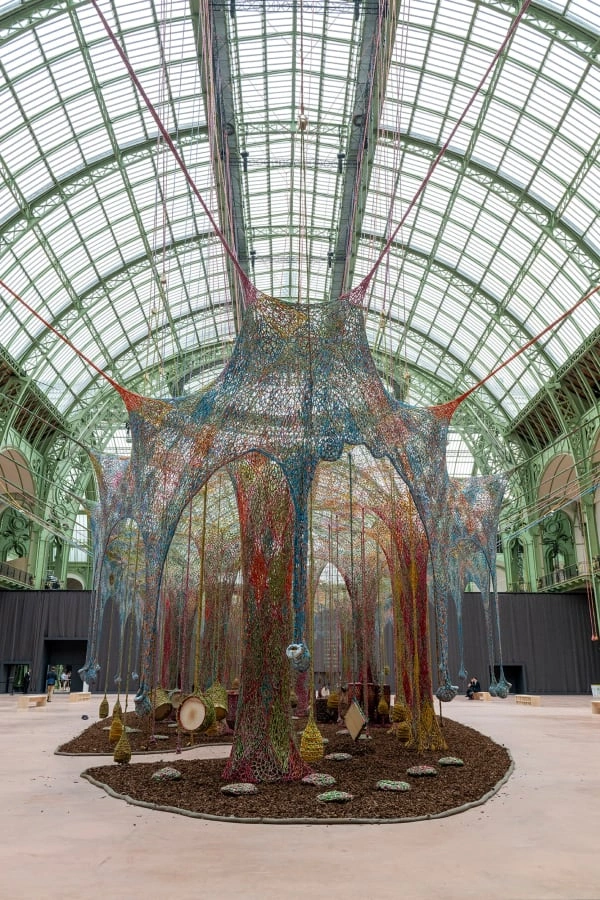
Ultimately, Nosso Barco Tambor Terra proposes a different kind of architecture, one that listens, breathes, and remembers. His textile world offers visitors something rare: a chance to slow down, reconnect, and rediscover art as an experience that lives and breathes beside us.




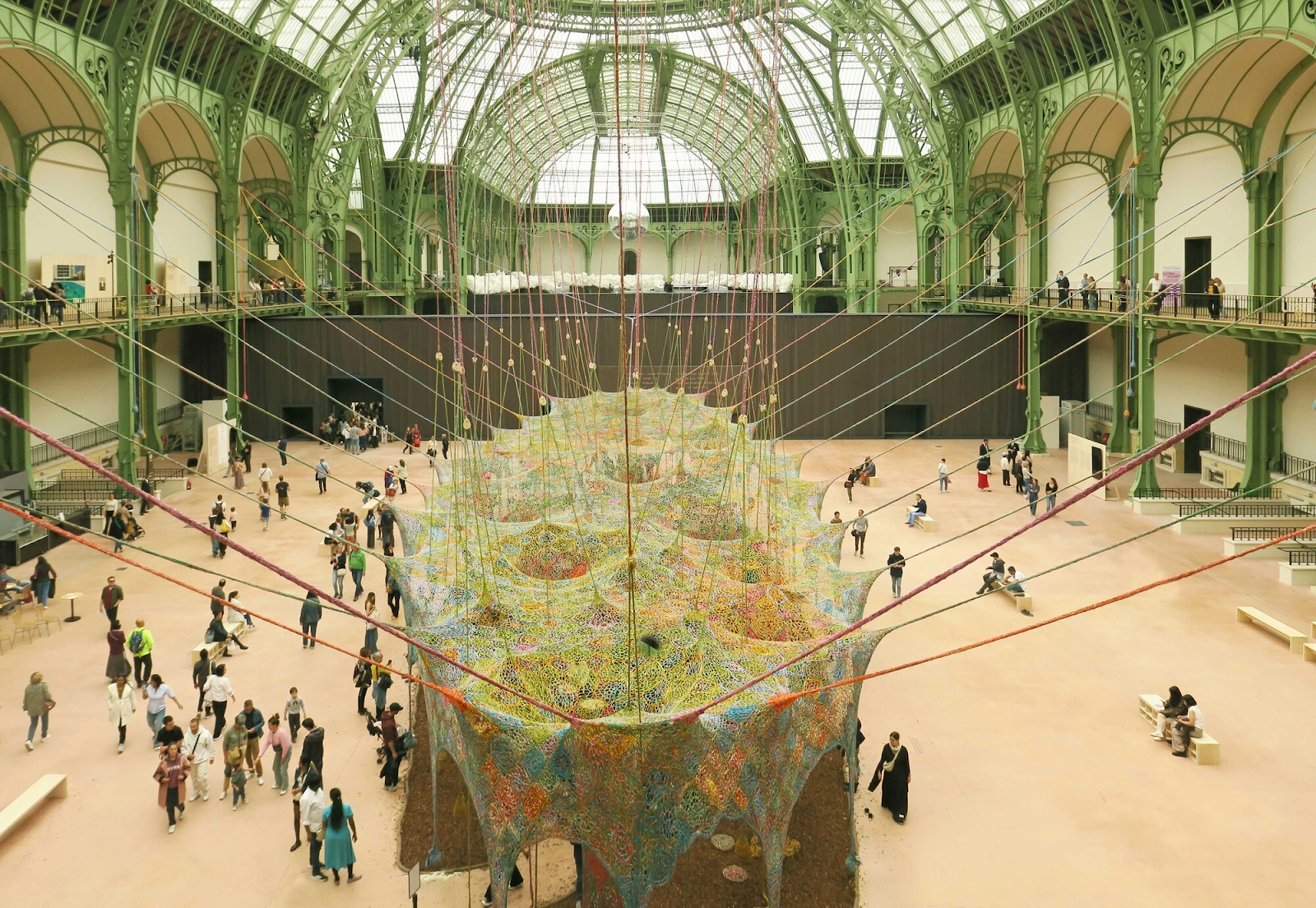


















Leave a comment